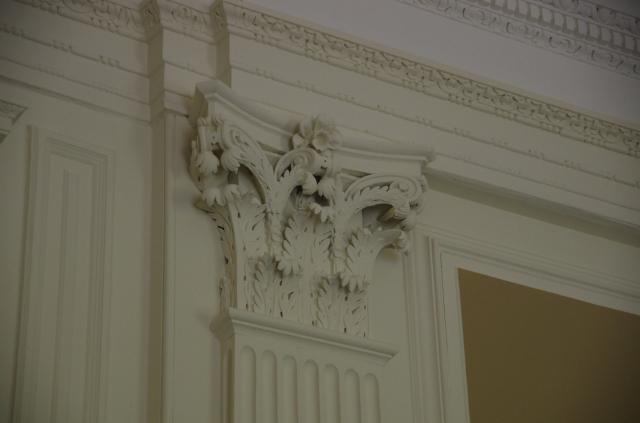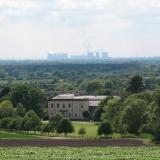Report on Visit to Market Weighton, Holme Hall and Everingham
Sunday, 20th March 2016
The first visit of 2016 began with a short guided tour around Market Weighton led by David Neave. The town was particularly prosperous in the eighteenth century and a number of fine town houses were built there. The town also boasts the oldest Methodist chapel in the East Riding and the Londesborough Arms Hotel; one of a number of buildings we saw which has been attributed to John Carr.
Our next stop was at Holme on Spalding Moor to visit Holme Hall. This house has not been much seen by the public due to having been in institutional use for many years. Despite this it retains a number of fine Georgian interiors. At the heart of the house is a Catholic chapel designed by John Carr, but much altered by later generations.
We next visited the small church of St Peter, Harswell. This church has ancient origins, but was rebuilt in the 1870s, incorporating some Norman and later stone work.
In Everingham we saw two churches. The parish church, dedicated to the local Anglo-Saxon Saint Everilda, was rebuilt, probably by John Carr, in the 1760s. Its interior is now very sparse with reused Victorian fittings. The catholic chapel beside Everingham Hall was built in the 1830s to the designs of the Italian architect Agistino Giorgioli and is dedicated to Saints Mary and Everilda. The interior, with a giant order of Corinthian columns and a vaulted ceiling is a piece of serious classicism, hidden by an austere, almost windowless exterior.
More photographs from the day’s trip can be found on the GSEY Facebook page. https://www.facebook.com/media/set/?set=a.1240425792638780.1073741861.209661439048559
Holme Hall, Holme on Spalding Moor, East Yorkshire
Built in the 1660s for Lord Lngdale, Holme Hall was extended in the 1720s and again circa 1760. It has fine Georgian internal features and a Roman Catholic chapel of 1766 attributed to John Carr. The home of the Stourton samily in the 19th century, it was a convent from 1929 until the 1970s. It is now a Sue ... (read more...)


 John Carr
John Carr

